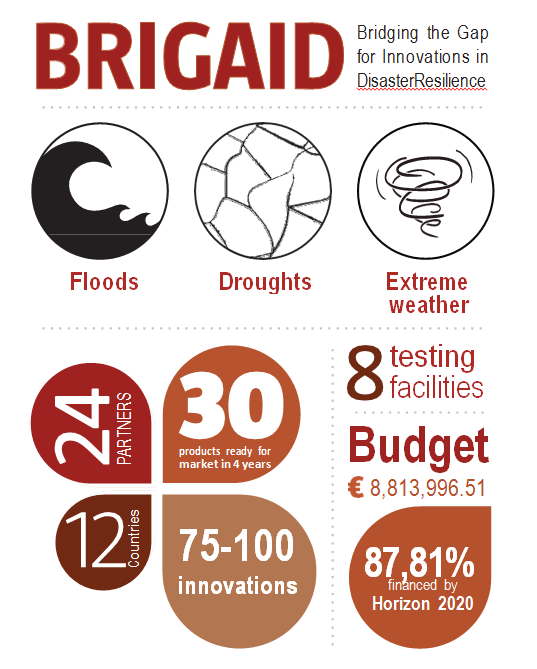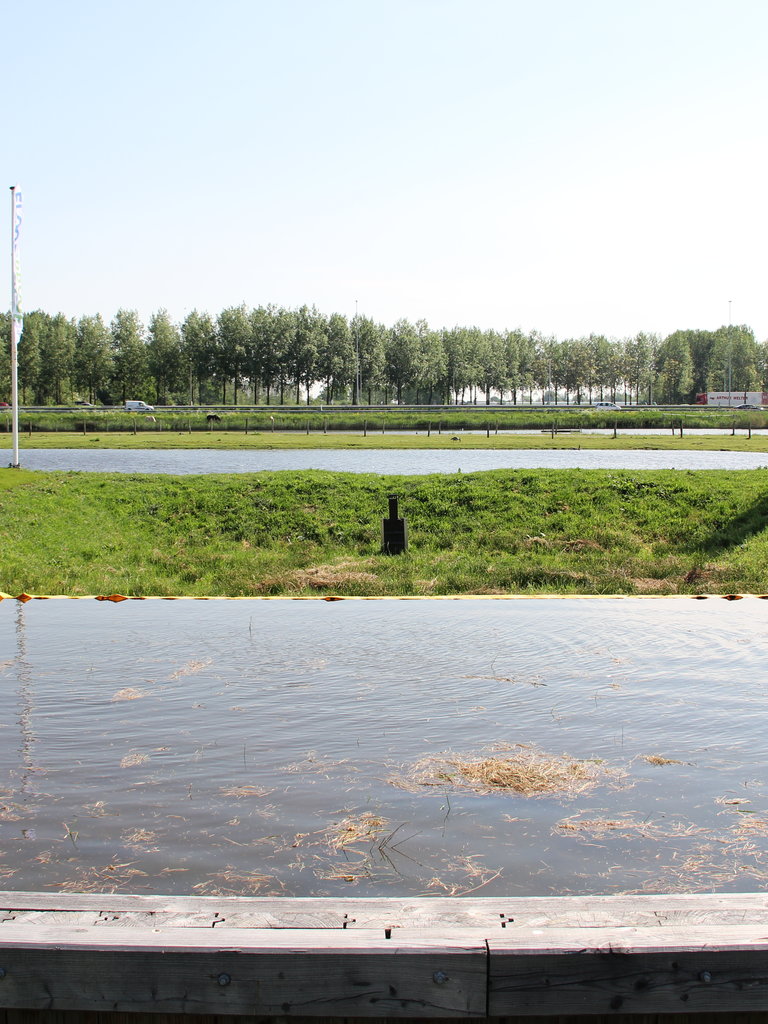
Bridging the gap for disaster resilience
BRIGAID awarded as Horizon2020-project
By Marietje Böhmer
Recent studies indicate that many regions are prone to increased risks of floods, droughts and extreme weather. The disrupting damages from these natural hazards affect lives and are expected to accumulate even further in the coming decades. This trend calls for effective, affordable and scalable technology.
As climate adaptation is a growing market, hiccups in the innovation cycle mean that companies miss business opportunities. The gap has been wide between scientists and entrepreneurs who come up with good ideas and the market who needs effective solutions. TU Delft contributes to accelerating the development of these new technologies and bring- ing them to the market. As part of its efforts, the university designed the project “BRIGAID: Bridging the gap for innovations in disaster resilience” with 23 partners. The European Union awarded the proposal with € 7,7 million funding from its Horizon 2020 research and innovation programme.
Bas Jonkman, professor of Integral Hydraulic Engineering at TU Delft is project coordinator of BRIGAID. Jonkman is proud that the project received this support: “BRIGAID is well positioned to bridge the gap in the innovation cycle for disaster resilience.” The multi-disciplinary consortium is composed of some key academic institutes and small and medium businesses in Europe with excellent experience in innovation development, testing, business devel- opment and launching innovations to the market. “Policy and decision makers of local governments are committed to working together with us, by providing a playing field where new things are possible.” Their involvement is important, since weather hazards bring along issues of safety and law making. Local governments are motivated to contribute to the climate challenges as well as strengthening regional economy. The close collaboration between the private and public sector will fasten the process of climate adaptations becoming available in the markets in Europe, its associated countries and overseas territories.
About Prof. dr. ir. S.N. Jonkman
Bas Jonkman, professor of Integral Hydraulic Engineering at TU Delft is project coordinator of BRIGAID
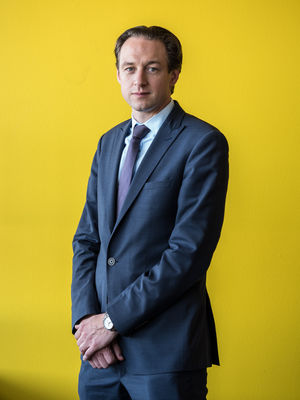
Getting new technology for climateadaptation implemented has proven to be difficult. This has multi-facet- ed causes. The intensity of climate hazards and the vulnerability of societies vary per region. Impacts of climate-related hazards are therefore heterogeneous. The different local conditions make the designing and testing of effective solutions more complex. Policy and decision makers and the societies that are affected by the hazards may feel resistance to changing old technology for newer ones. The innovators need a field in which they can test in a real-life set- ting and demonstrate their solutions to investors, clients and citizens. With the support of the European Commission’s Horizon2020 program BRIGAID will provide that.
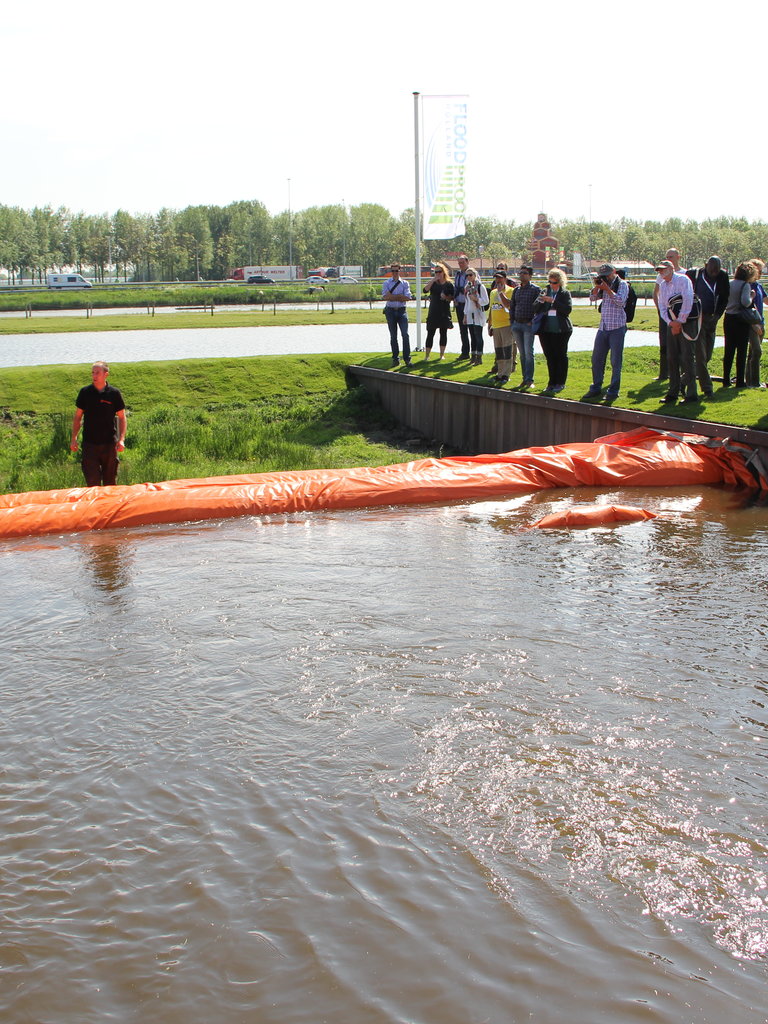
Testing facilities
Through BRIGAID, technology will be developed and implemented in different parts of Europe simultaneously. “We, together with our partners from 12 countries, will build 8 testing facilities in Europe for 75-100 innovations in total. Out of those innovations, the consortium aims that, within four years, 30 inventions for climate resilience will be ready for the market.” Due to the typical local geographical and climate conditions, each testing facility provides different benefits for the testers. At Flood Proof Holland (FPH), the testing facility in the South West of The Netherlands, the entrepreneurs and academics can test their technology in a situation to up to 1,5m water depth.
Stocktaking innovations
The consortium is in the process of selecting the 75 – 100 innovations that are ready for life demonstrations at the different testing facilities. The partners are stocktaking a large variety of climate adaptation innovations that can be tested. “We have room for some more entrepreneurs with smart ideas, who want to use the testing facilities and that are not yet part of the project.” Bart de Wever, mayor of Antwerp, expressed his willingness to provide a residential setting for testing innovations for BRIGAID.
30 inventions for climate resilience will be ready for the market within 4 years.
Brigaid's aims for the near future
In Romania, the facility to test flood defences will be constructed downstream of a dam, so that high flow velocities can be generated. This provides chances for testing climate resilience innovations under different conditions. Dan Constatin from the Rumania Water Authority is project manager for the local implementation of Flood Proof Romania (FPR). “The building of this facility will be finished within a year. It is great that we can showcase the flood defences in action.
These products are not something you order online.” TU Delft has already proven that these living labs are effective. FPH is a suc- cessful lab facility for temporary flood defences. It is developed by the valorisation programme VP Delta Dutch Water Innovations at the science park of TU Delft. Here, academics, entrepreneurs and local governments frequently involve users and media through demonstration events. These defences shown in a real life pilot setting hold the promise to efficient- ly prevent floods in an inexpensive way. Many of the innovations at FPH are the result of partnerships and cooperation between businesses, entrepreneurs, educational institutions, governments and end-users. This living lab for climate adaptation functioned as showcase for the concept of BRIGAID and will be followed for the three climate hazards in other European countries. VP Delta shared their expertise and network and assisted in initiating the proposal for BRIGAID. The new demonstration projects are expected to receive international attention and will attract (foreign) talent.
We have room for some more entrepreneurs with smart ideas
Bart de Wever, Mayor of Antwerp
Jonkman is very enthusiastic about the opportunity to also test in residen- tial areas. Like many parts of Europe, the Belgian city frequently gets challenged by flooding from heavy rainfall. Local authorities are explor- ing if these flood risks can be reduced by ruling that new and renovated flat roofs must be vegetated. The green roofs allow uptake and temporary storage of rain water, that otherwise would fall on the ground. “We would like to explore a new smart system that is able to temporarily store water on the roof, when the system capacity to deal with the amount of surplus water on the street and sewage system is limited. This smart version of the green roof knows through sensors when there will be enough uptake capacity in the street and sewage system, to release the water from the temporary storage.”
Validations tools
In order to help the startups and the small and medium enterprises with their testing procedures, BRIGAID is developing tools. The knowledge institutes that take part in the consortium will design standardised academic and independent methods for testing temporary flood defences, measurements for droughts and extreme rainfall. These evaluation frameworks focus on the technological effectiveness of the innovation, as well as on the organisational and governance conditions. The consortium will also develop a business model specifically for climate adaptation innovations. These tools will be validated throughout all the steps of the projects: from reviewing
the 75-100 promising innovations on floods, droughts and extreme weather towards bringing the top 30 with the highest socio-technical and investment readiness to the market. Through this, BRIGAID strives to become the quality label for climate adaptation in Europe and beyond. With the goal to attract investors in climate adaptation.
Network
BRIGAID gives a boost to the European network that meets regularly in project meetings, demonstration events and on conferences. Because BRIGAID focuses on multiple haz- ards, there will be ample opportunities for mutual learning about innovative solutions across hazard domains, and across disciplines. It also functions as a conjunction to potential investors and co-creators. “We are working together with construction companies and other multinationals that could be useful for the startups
in the living labs. Large companies that are interested in investing in the development stages of the innovations, such as construction companies and others. One of the startups uses geotextiles. One multinational with a huge network of clients that produces geotextiles offered to jointly improve the product.”
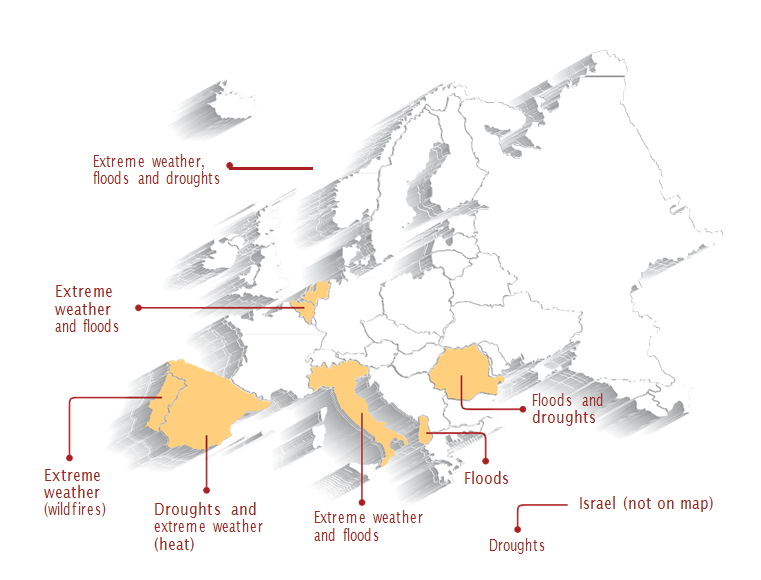
Public and private stakeholders
In the Netherlands, the government protects its citizens against floods through constructions such as dikes and pumping stations. In many parts of the world there is no such system-wide solution for water management. Many private parties arrange their own local solutions. In New York for example, large office buildings may have their own flood protection or sewage system. This brings along a need for solutions that protect local businesses and homes effectively, and with something that is not too expensive. With a much stronger social media use, citizens express their needs and wishes on disaster resilience. Their input is valuable for designers. BRIGAID appreciates the involvement of stakeholders in the early stages of the innovation life cycle. The consortium acknowledges all forces that have an influence on the uptake of these products in the market. A valuable partner in this technological consortium is the anthropologist Steve Rayner.
The professor of Science and Civilization at Oxford University, and his PhD students will study the social and political aspects of the acceptance of new technology. Rayner emphasizes that “it is very useful to have a good understanding of institutional cultures and how this influences policy and decision makers in their uptake of new climate adaptation technology. In this process, elements such as their span of control and institutional flexibility are vital.” With their findings, they will advise the innovators on how to effectively incorporate these dynamics in the innovation life cycle.
Role of Delft
Jonkman is excited that TU Delft contributes to this project with multiple types of expertise. Academics from hydraulic engineering focus on large scale flooding, researchers from water management specialise in localised rainfall flooding and drought, and the scientists from the faculty of Technology, Policy and Management (TPM) target risk management and ethics aspects. Staff from the Innovation & Impact Centre add extensive experience in involving innovative start-ups’ and small and medium enterprises, establishing living labs, obtaining re- search funding, managing large scale projects, and the already established Flood Proof Holland as a successful living lab and meeting ground for stakeholder engagement for weather resilience in The Netherlands.
Project management
The Innovation & Impact Centre Project Management Team of TU Delft supports the scientific coordinator with the administrative, legal, financial and organisational aspects of both obtaining and leading this project.
Their experts on how to structure, budget and govern large scale projects assist all partners of BRIGAID. The team initiates steering committee meetings, monitors the time line for the delivery of management reports of each partner, provides handbooks to all partners about governing the project in compliance to Horizon2020 requirements and acts as liaison with the European Union. Bas Jonkman is very happy with the support of the Innovation & Impact Centre: “The unifying role between all partners, with cultural differences and language barriers, is essential. Through the well-connected network of the project management team, we, together, succeed in creating a unified consortium of all partners.”
